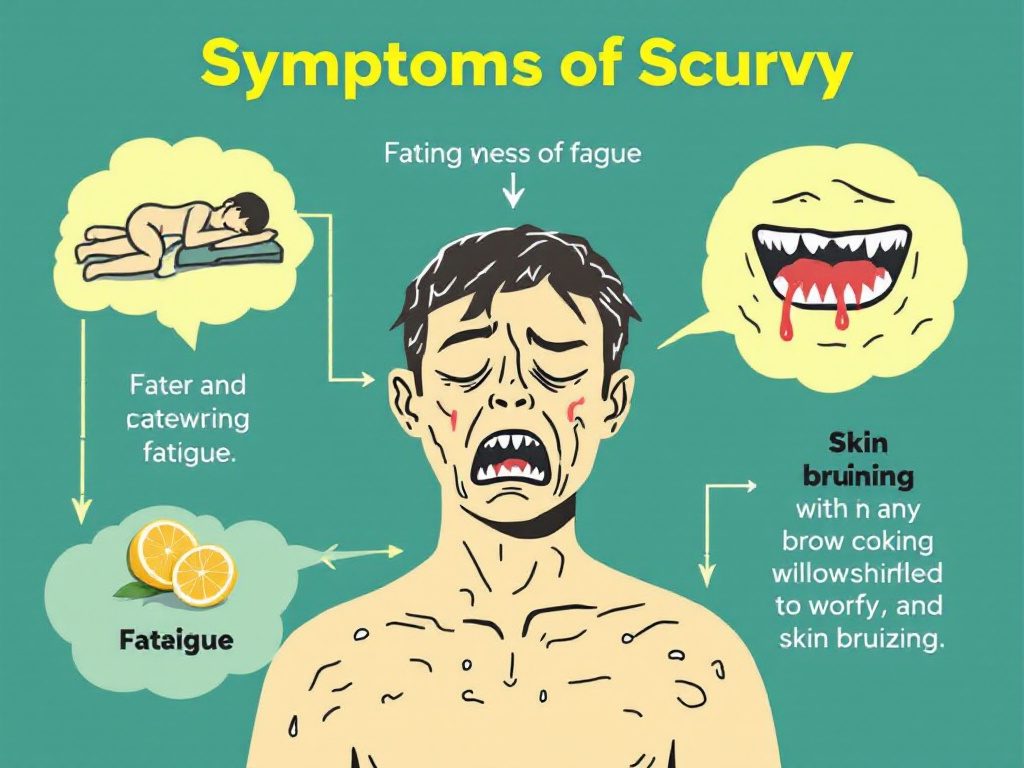Scurvy , a disease resulting from a deficiency of Vitamin C (ascorbic acid), has plagued humanity for centuries. While it was once a common affliction among sailors and soldiers, today, it remains a relatively rare condition in developed countries. However, understanding its symptoms, causes, and prevention is crucial for public health.
What is Scurvy?
The disease occurs when there is an insufficient level of Vitamin C in the body, which is essential for the synthesis of collagen, a vital component of connective tissues. As our bodies cannot produce Vitamin C, we must obtain it through our diets.
Symptoms of
The symptoms of scurvy can appear gradually and may include:
- Fatigue
- Swollen and bleeding gums
- Joint pain
- Skin bruising
- Poor wound healing
Some of these symptoms can also be mistaken for other health issues, making proper identification vital.
How Common is it Today?
In modern society, scurvy is uncommon thanks to the availability of fresh fruits and vegetables. However, it can occur in populations with limited access to nutritious foods, including individuals with dietary restrictions, the elderly, and those suffering from certain chronic illnesses. Recent studies indicate that while scurvy is rare, it is still a concern in some low-income communities.
How to Achieve Adequate Vitamin C Levels
To prevent scurvy, it is crucial to include Vitamin C-rich foods in your diet. Foods high in Vitamin C include:
- Citrus fruits (oranges, lemons, limes)
- Strawberries
- Bell peppers
- Broccoli
- Tomatoes

Supplementation with Vitamin C tablets or powders is also an effective method for those who may struggle to get enough from their diet alone.
Identifying and Alleviating
To identify scurvy, one should be vigilant about its symptoms and consult a healthcare provider if these symptoms arise, especially in risk groups. Treatment involves increasing Vitamin C intake through diet or supplements, and patients typically respond positively within a few days of adequate intake.
In conclusion, while scurvy is much less common in today’s society, awareness and prevention remain essential for maintaining health and wellness. Find out more about it here
Check out our Vitamin D.A.K.E. series
